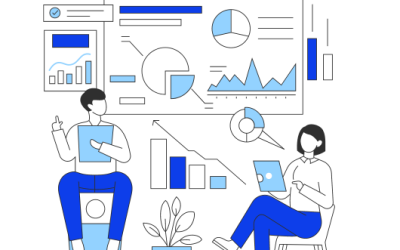Over the last couple of blogs, we have been making our way through the responsibilities of the sales funnel. We have looked at the top of the funnel which is primarily the responsibility of Marketing. We have looked at the middle of the funnel which is shared responsibilities between Marketing and Sales. Finally, we will look at the bottom of the funnel which is the responsibility of Sales.
The bottom of the sales funnel consists of two stages: Opportunity and Customer. First, let’s look at the Opportunity stage. After qualified lead makes their way through the funnel, they arrive at the opportunity stage when they are ready to make a decision. The qualified lead considers you as a solution, and Sales must be ready to guide them into the Customer stage. Sales can do this by considering the following strategies:
- Make sure your lead knows all that they need to know. Ask the right questions. Provide the best materials to give them peace of mind that they are making the right decision. It is easy to feed them information with all the bells and whistles, but too much information can create stress and doubt. Get to know your lead more in depth, so that you can help them know all that they need to know. You can do this by sharing case studies of businesses that you helped with a similar need or product/service sheets that address their concerns.
- Provide a plan that addresses their needs specifically. Show them that they are valuable to you and you want them to be successful. A detailed plan prevents confusion, whereas a generic plan is vague and can leave line items open for discussion. A generic plan will cause a longer sales cycle by wasting your time with unnecessary questions. A detailed plan does the opposite. It answers questions before they are asked, and the sales cycle is smoother and more efficient.
- Give a breakdown of costs. No one likes hidden fees. Show a breakdown of everything. If a product or service includes a necessary license or tax fee, list it. A qualified lead will be more likely to purchase when you are transparent with your costs. It does not make sense to hide these costs, because all it does is cause trouble down the road with complaints, negotiations, and negative reviews.
By using these strategies, your qualified lead will be more ready to purchase. When they purchase, they move into the Customer stage. Once they became a customer, everyone is happy. While the funnel may technically stop here, the sales process must continue to retain the new customer. It is the responsibility of Sales to nurture the customer through support and relationship building. Here are few ways to retain customers:
- Set your customer’s expectations. “I assumed” is not how you want a sentence to start from your customer. Let them know what you will do after the sale.
- Use automation to stay in front of them. “Out of sight, out of mind” is true and it is not what you want with your customer. Take advantage of your CRM’s automation features to send them emails or text notifications.
- Send a survey for feedback. Surveys show your customers that you are listening and want to improve their experience and the experience of others.
- Use webinars and videos to educate. As your service and/or product improves, let your customer know. They will be more likely to renew and remain loyal when they can continue using your product/service without the hassle of trying to figure out new features.
There are many other ways to retain customers. The best way to retain is by knowing your customer so well and meeting their need that they would not even think about going anywhere else.
An effective sales funnel is necessary for success. From top to bottom, when Marketing and Sales know their roles and responsibilities in the funnel, you will get fewer but more qualified leads and higher conversion rates which, in the end, results in higher profit. If you have a question about the sales funnel and the responsibilities of Marketing and Sales, contact us. We are happy to answer any questions you may have.





